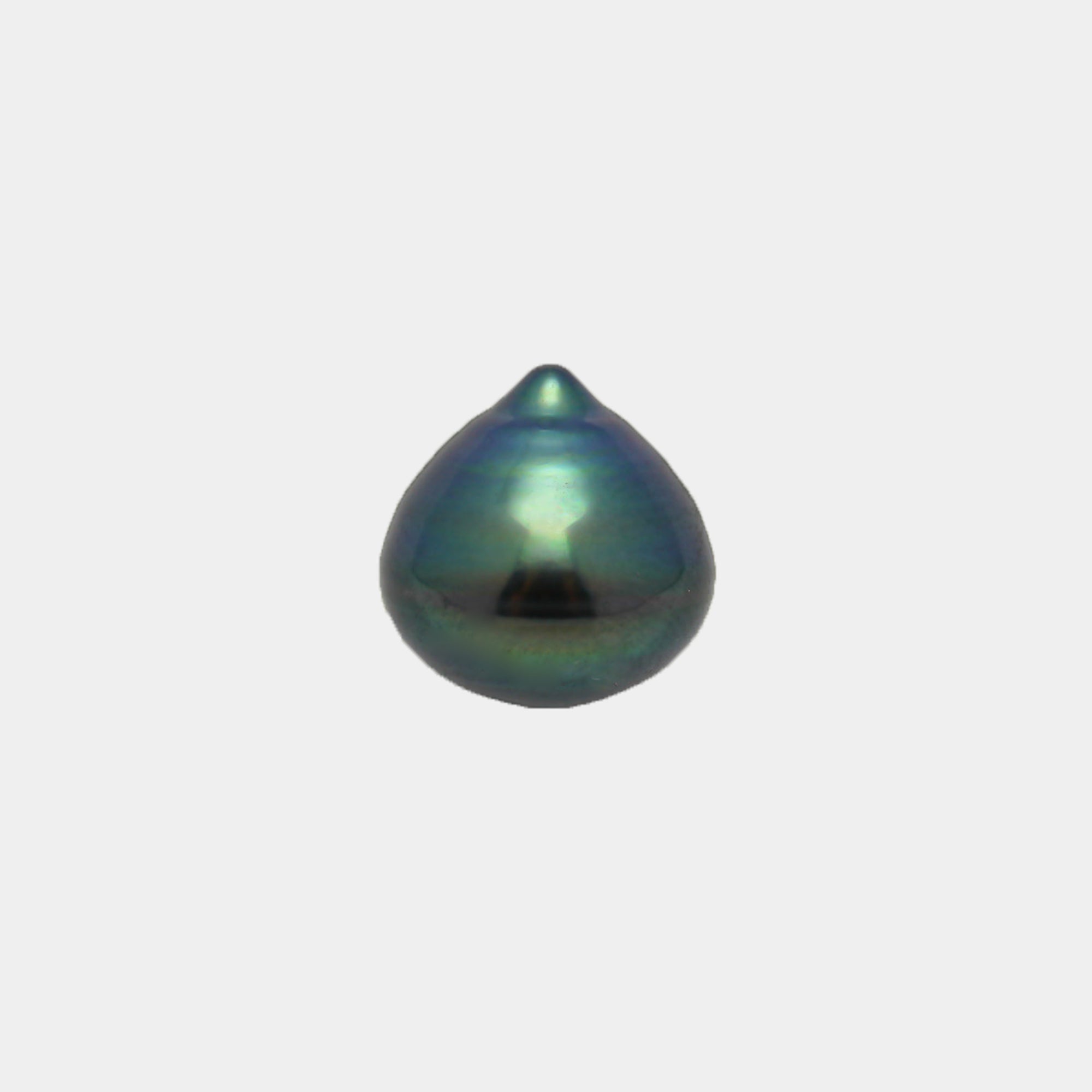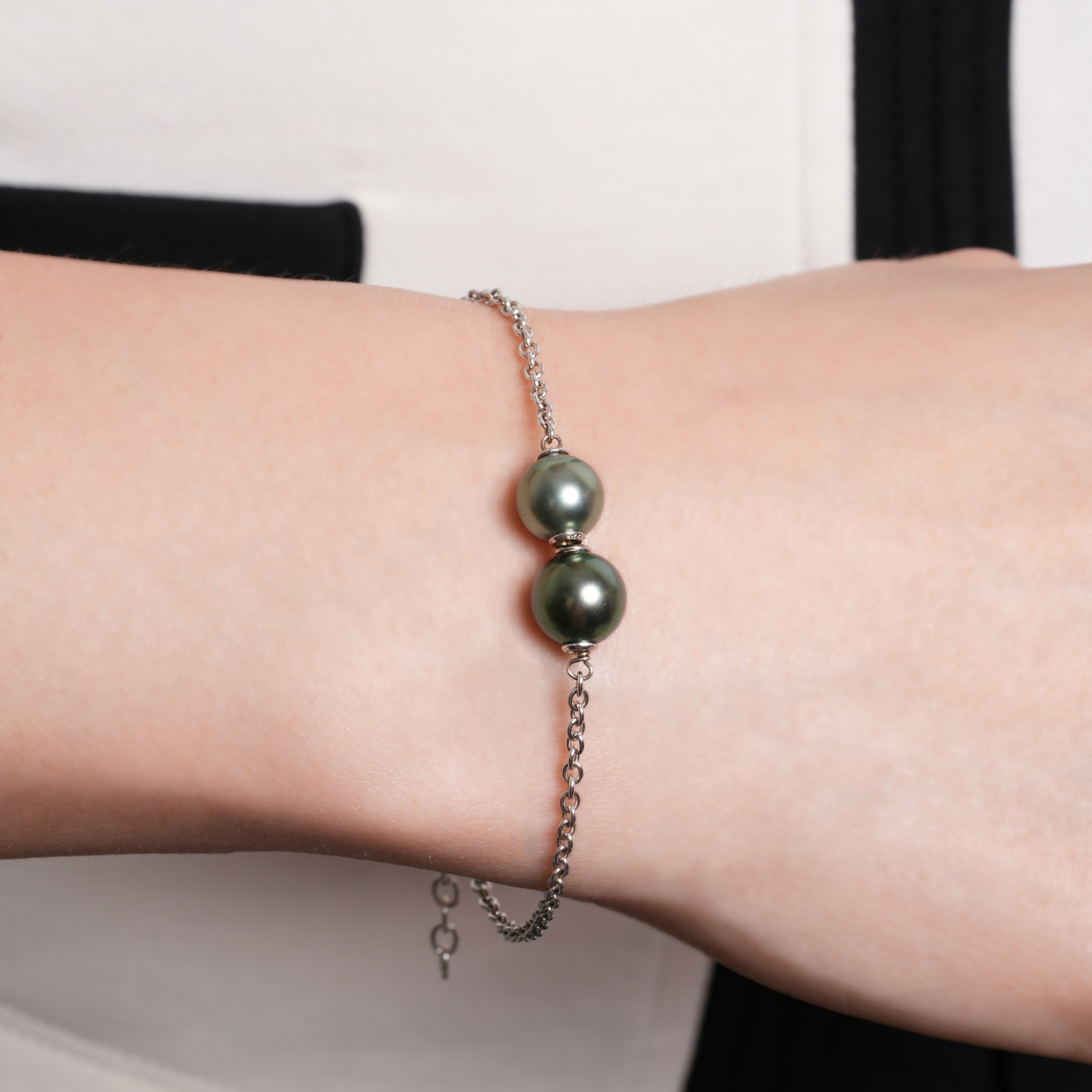
The forgotten Blue Color tahitian Pearls - Just How Rare Are They?
The Blue Color Tahitian Pearls: Rarer Than You Think
The ocean's depths hold a world of mystery, and one of the most famous treasures are pearls. It considered that peacock tahitian pearls are the most expensive pearls, however, blue tahitian pearls are rarer than you think.
So how rare are blue pearls?
Tahitian Blue pearl are extremely rare, as there are no dedicated farms cultivating blue pearls.
Decoding Natural Colors: How Tahitian Pearls Get Their Hues
Tahitian pearls, cultivated in the black-lipped oysters of French Polynesia, are renowned for their naturally dark colors. These hues arise from a combination of factors:
- Black-Lipped Oysters: The specific type of oyster plays a crucial role, as its nacre (the substance that forms a pearl) naturally contains darker pigments.
- Environmental Influences: The pristine waters of French Polynesia, rich in minerals and nutrients, contribute to the pearls' unique color palette.
While shades of gray, green, and even aubergine are relatively common in Tahitian pearls, blue hues are a rare and captivating anomaly.
Blue Pearls: A Rare Breed Indeed
Blue pearls, however, are a different story altogether. They are not associated with a specific oyster species or region. Instead, their blue hues occur due to a combination of rare factors:
- Genetic Anomalies: Sometimes, an oyster's genetic makeup can lead to the production of blue pigments in its nacre.
- Trace Elements: The presence of trace elements like copper or manganese in the oyster's environment can influence pearl color, potentially leading to blue hues.
- Environmental Factors: While not fully understood, specific water conditions, including temperature and salinity, might play a role in blue pearl formation.
Fact: Why are they rare?
- No Dedicated Farms: Unlike Tahitian or South Sea pearls, there are no dedicated farms cultivating blue pearls, making them a truly natural wonder.
- Chance Encounters: Blue pearls are typically found serendipitously during the harvesting of other pearl types, further highlighting their scarcity.
- A Spectrum of Blue: Blue pearls encompass a range of hues, from pale sky blue to deep indigo, with each shade possessing its own level of rarity.
The Value of Blue Pearls: A Reflection of Their Elusive Beauty
The rarity of blue pearls, coupled with their captivating beauty, makes them highly prized among collectors and jewelry enthusiasts. Factors influencing their value include:
- Depth and Saturation of Color: Intense, vibrant blue hues are generally more valuable than paler shades.
- Luster: Like all pearls, the luster, or surface brilliance, significantly impacts a blue pearl's value.
- Shape and Size: Round, well-formed blue pearls are particularly rare and command premium prices.
In Conclusion: Surprising
Blue pearls stand as a testament to the unpredictable beauty and rarity found in the natural world. Their elusive nature, born from a unique confluence of factors, makes them a true treasure for those fortunate enough to possess them. So, the next time you encounter a blue pearl, take a moment to appreciate its journey and the extraordinary forces that brought it into existence.



1 comment
I thought that ‘black’ pearls were the rarest and not permitted to be harvested.
BINA PAUL
Leave a comment
This site is protected by hCaptcha and the hCaptcha Privacy Policy and Terms of Service apply.